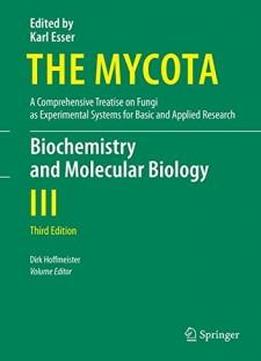
Biochemistry And Molecular Biology (the Mycota)
by Dirk Hoffmeister /
2016 / English / PDF
7.9 MB Download
This new edition provides a comprehensive look at the molecular
genetics and biochemical basis of fungal biology, covering
important model organisms such as Aspergilli while also
integrating advances made with zygomycetes and
basidiomycetes.
This new edition provides a comprehensive look at the molecular
genetics and biochemical basis of fungal biology, covering
important model organisms such as Aspergilli while also
integrating advances made with zygomycetes and
basidiomycetes.
This book groups a total of 15 chapters authored by expert
scholars in their respective fields into four sections. Five
chapters cover various aspects of gene expression regulation.
These range from regulation in organismal interactions between
parasitic fungi and their host plant, heavy metal stress and
global control of natural product genes to conidiation and
regulation through RNA interference. Two chapters are dedicated
to signal transduction, highlighting MAP-kinase-dependent
signaling and heterotrimeric G-proteins. Fungal carbohydrates are
the subject of the third section, which addresses both polymeric
cell wall carbohydrates and trehalose as an important, low
molecular weight carbohydrate. The fourth section emphasizes the
metabolism of major elements (carbon, nitrogen, sulfur) and
critical cellular pathways for primary and secondary products.
This book groups a total of 15 chapters authored by expert
scholars in their respective fields into four sections. Five
chapters cover various aspects of gene expression regulation.
These range from regulation in organismal interactions between
parasitic fungi and their host plant, heavy metal stress and
global control of natural product genes to conidiation and
regulation through RNA interference. Two chapters are dedicated
to signal transduction, highlighting MAP-kinase-dependent
signaling and heterotrimeric G-proteins. Fungal carbohydrates are
the subject of the third section, which addresses both polymeric
cell wall carbohydrates and trehalose as an important, low
molecular weight carbohydrate. The fourth section emphasizes the
metabolism of major elements (carbon, nitrogen, sulfur) and
critical cellular pathways for primary and secondary products.











